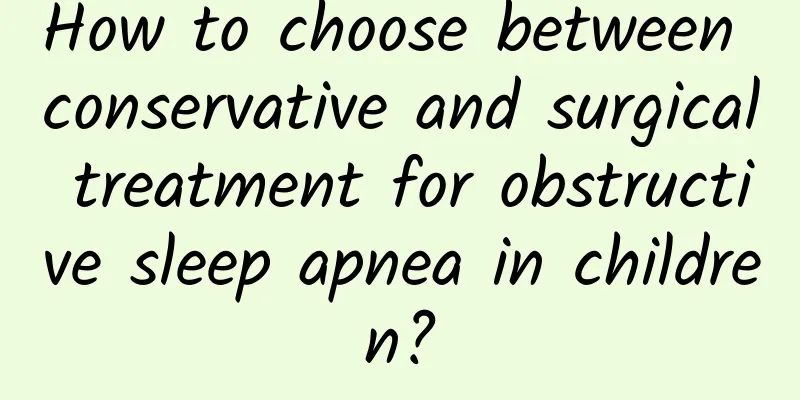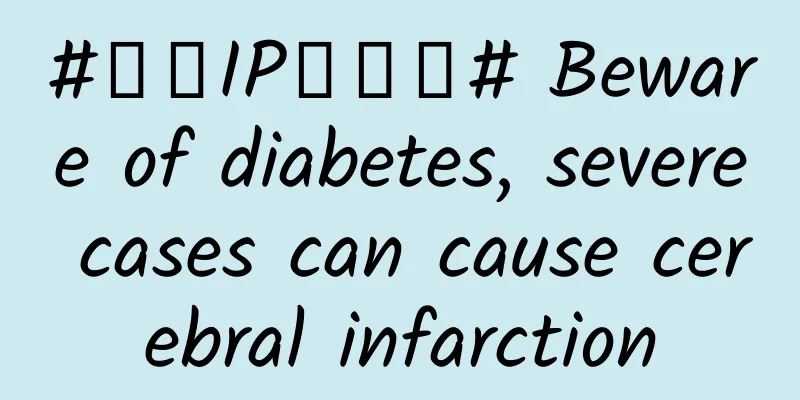How to choose between conservative and surgical treatment for obstructive sleep apnea in children?

|
Author: Chang Li, Chief Physician, Children's Hospital, Capital Institute of Pediatrics Reviewer: Liu Li, Chief Physician, Beijing Children's Hospital, Capital Medical University The treatment of obstructive sleep apnea in children is mainly aimed at the cause. The most common cause is enlarged tonsils and/or adenoids. Enlarged tonsils and/or adenoids can cause partial or complete obstruction of the upper airway, affecting sleep structure and breathing. There are basically two treatment methods for this situation, one is conservative treatment and the other is surgical treatment. Whether to use conservative treatment or surgical treatment depends on the severity of the child's condition and is determined by the doctor. First, we need to look at the severity of the symptoms and how long they last. For example, if the child's snoring is loud, there is apnea, or even waking up due to suffocation, which affects the child's sleep, this often indicates that the symptoms are more serious; if the above symptoms last for a long time, such as more than 3-6 months, it also indicates that the condition is more serious. Secondly, we need to look at the results of physical examinations and auxiliary examinations, such as the degree of tonsil enlargement (physical examination results of the doctor), and the results of nasopharyngeal laryngoscope or nasopharyngeal lateral radiographs. Figure 1 Original copyright image, no permission to reprint Finally, it is more important to look at the results of sleep breathing monitoring. It is mainly judged based on the obstructive apnea hypopnea index (OAHI for short) in the sleep breathing monitoring results. 1<OAHI≤5 is mild, 5<OAHI≤10 is moderate, and OAHI>10 is severe. For example, an OAHI of 20 is equivalent to one respiratory event every 3 seconds, that is, obstructive hypopnea or obstructive apnea occurs, indicating that the child's upper airway obstruction is obvious, which will greatly affect the child's sleep. In addition, you should also look at the child's blood oxygen situation. If the child's average blood oxygen saturation is relatively low during sleep, it also means that his condition is more serious. Conservative treatment is divided into general treatment and drug treatment. For general treatment, obese children should pay attention to weight loss; there are two commonly used therapeutic drugs, one is nasal glucocorticoids, and the other is leukotriene receptor antagonists. For children over 2 years old, nasal glucocorticoids can be used for 6 weeks in principle; leukotriene receptor antagonists (such as montelukast) can generally be used for 3 months, so the period of conservative treatment is basically 3 months. If combined with rhinitis, it is often related to allergies, so you should pay attention to avoid contact with allergens. In addition, when a child has a cold, the symptoms of upper airway obstruction will be significantly aggravated. Therefore, the number of respiratory infections in children should be reduced as much as possible to avoid repeated aggravation of the disease. Figure 2 Original copyright image, no permission to reprint Drug treatment is generally very safe. Nasal glucocorticoids are topical hormones. The dosage of each spray is very small and the side effects are very low. Therefore, if the medication is used according to the doctor's instructions, parents do not need to worry about the side effects of glucocorticoids. The use of leukotriene receptor antagonists is also very common. Some side effects written in the instructions, such as causing children to be excited and have a bad temper, have a relatively low incidence in clinical practice; even if they occur, they will generally disappear after stopping the medication, so there is no need to worry too much. The effect of drug treatment is related to the severity of the disease and individual conditions. Some children are very sensitive to drug treatment and the effect is very good after taking the medicine. There are many cases in clinical practice where the disease has improved through drug treatment, but there is also a possibility of relapse after stopping the drug. Parents must give medication to their children under the guidance of a doctor. The recurrence of obstructive sleep apnea in children is related to many factors, such as contact with allergens, colds, etc., which can induce recongestion and hypertrophy of the adenoids and (or) tonsils. Therefore, we should try to avoid the above-mentioned inducing factors in daily life to avoid the recurrence of obstructive sleep apnea. Generally speaking, conservative treatment lasts for 1-3 months. If general treatment and drug treatment last for more than 3 months and the effect is not good, a professional doctor should evaluate whether surgery is suitable. Adenoids and/or tonsillectomy for children with obstructive sleep apnea is an elective surgery. Generally speaking, when the child's symptoms are more severe, parents are more willing to do surgery. Some parents also want to wait until their children are older before having surgery. Therefore, whether the surgery can wait depends on the severity of the child's illness. A professional doctor should conduct an overall assessment and communicate with the parents to finally determine the treatment plan and timing of the surgery. |
<<: Can't help eating? It's not your fault! Maybe there's something wrong with your body.
Recommend
TCM methods of maintaining health for women
I believe everyone must know the importance of he...
Treatment measures for accessory breast hyperplasia
Generally, people will experience breast developm...
How can women replenish qi, blood and kidney?
People all know that women need to replenish qi a...
Can pregnant women drink loquat paste?
We all know that during pregnancy, we need to be ...
How old are girls when they have sexual fantasies
With the development of the economy, people's...
What foods are good to eat to delay menstruation?
Menstruation comes every month for women, and it ...
Takayasu arteritis is known as the "Oriental beauty disease". Is there any way to prevent and treat it?
Author: Pan Lili, Chief Physician, Beijing Anzhen...
Fetal development at 17 weeks and changes in the mother
The development of the fetus at 17 weeks is somet...
Vulvar itching pictures and symptoms
Vulvar itching may be caused by environmental irr...
IUD Complications
An intrauterine device (IUD) is a contraceptive m...
What are the treatments for postpartum constipation?
Constipation is a very common problem. When this ...
Yellow discharge during pregnancy
Is it normal to have yellow discharge in early pr...
Is it normal not to get pregnant in a year and a half?
As we all know, many conditions need to be met fo...









